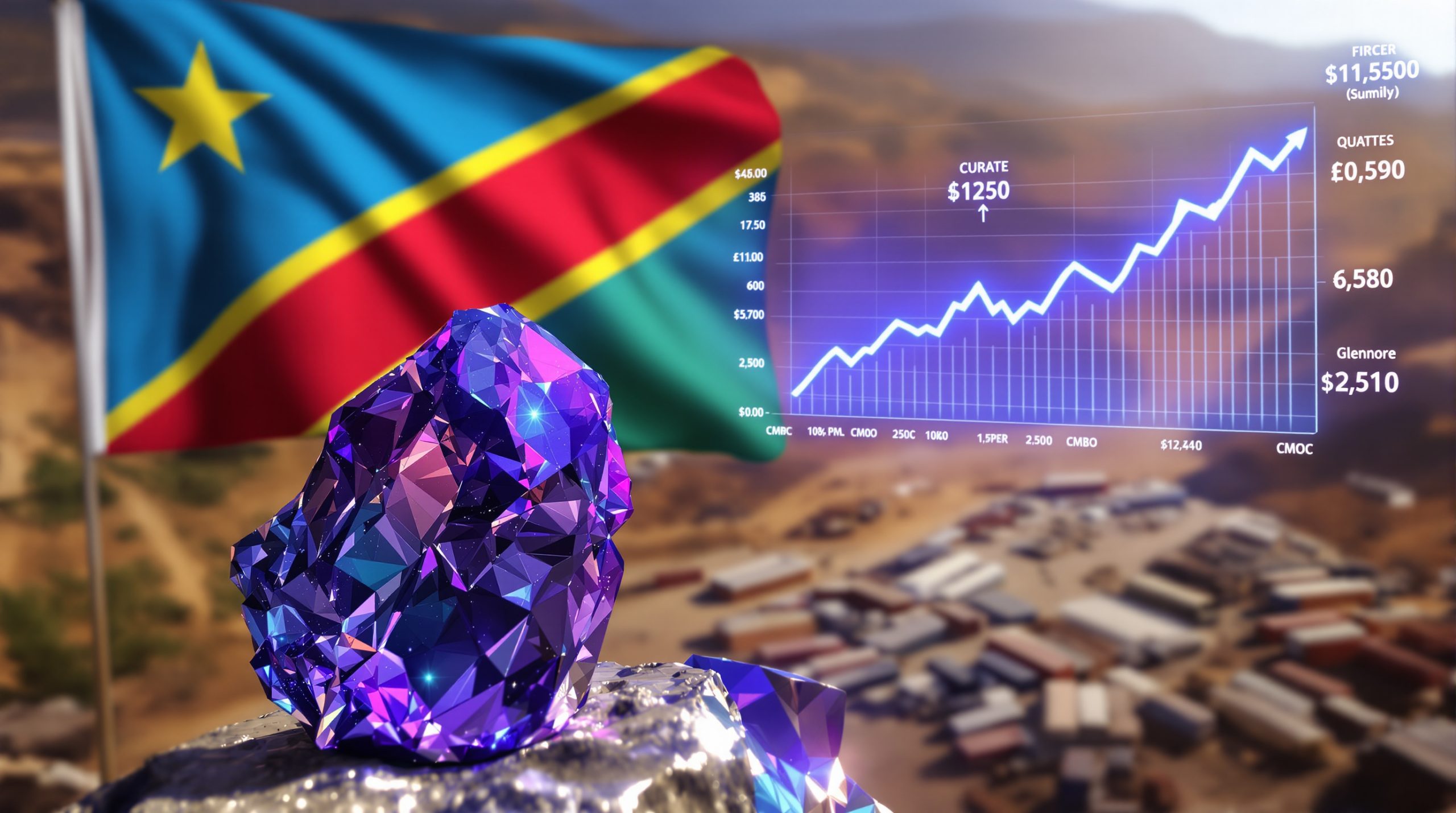The Shifting Foundation: Understanding the Transformation of the Western-Based US Dollar Financial System
The global financial landscape is experiencing a significant transformation as the Western-based US dollar system faces unprecedented challenges. While not experiencing a complete collapse, the dollar-centric financial architecture is undergoing substantial evolution driven by geopolitical realignments, emerging alternatives, and shifting economic powers.
How Is the US Dollar's Global Position Changing?
The US dollar has shown concerning signs of weakness, with financial institutions like Morgan Stanley projecting continued downward trajectory in the coming years. According to the International Monetary Fund's Currency Composition of Official Foreign Exchange Reserves (COFER), the dollar's share of global reserves has declined substantially over recent decades.
The Dollar's Recent Performance Indicators
Financial analysts have observed that when gold measured in the reserve currency doubles rapidly, it typically signals approaching geopolitical conflict or major economic dislocations. Recent gold price highs analysis shows this pattern has repeated throughout financial history and may indicate significant changes ahead for the dollar-based system.
Key Metrics Revealing Dollar Pressure
-
Reserve Currency Status: While still dominant, the dollar's share of global reserves has declined from approximately 70% at the start of the century to around 59% by late 2023, according to IMF COFER data
-
International Transactions: Dollar usage in international settlements has shown gradual decline as alternative payment mechanisms gain adoption
-
Gold Price Indicator: Significant increases in gold prices often signal concerns about fiat currency stability and monetary system transitions
-
Treasury Yield Pressures: Rising yields on US government debt reflect growing risk premiums demanded by international investors
What's Driving the Dollar System's Transformation?
The evolving landscape of the dollar-based financial system stems from multiple interconnected factors that collectively challenge its seven-decade dominance.
Geopolitical Realignments Reshaping Financial Flows
The global financial architecture is increasingly reflecting a multipolar world where economic power is more distributed. This shift manifests through:
-
BRICS Expansion: The bloc's growth to include major economies creates an alternative economic sphere with increasing financial independence
-
Regional Trading Blocks: Emergence of currency swap arrangements that bypass dollar settlement, allowing direct currency exchanges between trading partners
-
Sanctions Avoidance: Countries developing financial infrastructure specifically designed to operate outside dollar-dominated systems as a response to perceived weaponization of financial access
Technological Disruption to Traditional Banking
Innovation in financial technology is creating alternatives to the traditional Western banking infrastructure:
-
Central Bank Digital Currencies (CBDCs): China's digital yuan (e-CNY) has been tested in multiple Chinese cities according to the People's Bank of China, offering settlement options outside SWIFT
-
Alternative Payment Systems: Development of cross-border payment mechanisms that reduce dollar dependency, including China's Cross-Border Interbank Payment System (CIPS) launched in 2015
-
Blockchain Applications: Decentralized finance solutions enabling direct settlement without Western intermediaries, reducing friction and increasing settlement options
Structural Economic Challenges Within the US
Internal factors within the American economy contribute significantly to dollar vulnerability:
-
Debt Sustainability Concerns: The US federal debt has reached unprecedented levels according to the Congressional Budget Office and U.S. Treasury data
-
Twin Deficits: Persistent trade and budget deficits create structural pressures on currency valuation over the long term
-
Monetary Policy Dilemmas: The Federal Reserve faces challenging tradeoffs between inflation control and economic growth as competing priorities
How Are Nations Responding to Dollar Dominance?
Countries around the world are implementing diverse strategies to reduce their exposure to dollar-centric financial systems while maintaining necessary economic relationships.
Strategic De-dollarization Initiatives
Nations are taking concrete steps to decrease dollar dependence through carefully calibrated policies:
-
Reserve Diversification: Central banks increasing holdings of gold, euros, and yuan while reducing dollar allocations
-
Bilateral Currency Arrangements: Countries establishing direct currency exchange mechanisms that bypass dollar intermediation, reducing transaction costs
-
Commodity Settlement Alternatives: Energy and resource exporters accepting payment in non-dollar currencies, creating new pricing mechanisms
Case Studies in Reducing Dollar Exposure
Several notable examples demonstrate how countries are implementing de-dollarization strategies:
Russia's Accelerated Pivot
Following Western sanctions, Russia dramatically restructured its financial system:
- Reduced dollar reserves significantly since 2014 according to Central Bank of Russia data
- Established alternative messaging systems to SWIFT
- Developed domestic payment infrastructure independent of Western systems
China's Dual-Track Approach
China has pursued a nuanced strategy balancing integration with independence:
- Gradually internationalized the yuan through trade settlement agreements with multiple partners
- Established the Cross-Border Interbank Payment System (CIPS) as an alternative to SWIFT
- Maintained significant US Treasury holdings while diversifying new reserves into alternative assets
Brazil-China Direct Settlement
These major economies have established direct currency settlement mechanisms:
- Reduced transaction costs by eliminating dollar intermediation in bilateral trade
- Increased bilateral trade volumes through currency stability agreements
- Created a model for other regional economic partnerships to follow
What Maintains Dollar Dominance Despite Challenges?
Despite mounting pressures, several powerful factors continue to support the dollar's central role in global finance, explaining why transformation has been evolutionary rather than revolutionary.
Network Effects and Institutional Entrenchment
The dollar benefits from deeply established systems that resist rapid change:
- SWIFT Dominance: The messaging network continues to handle a significant portion of global payments
- Eurodollar Market Scale: Offshore dollar markets represent trillions in assets with established infrastructure
- Legal Precedent: Contracts worth trillions denominated in dollars with established legal frameworks
US Financial Market Advantages
America's capital markets maintain significant structural advantages:
- Depth and Liquidity: US markets offer unmatched capacity to absorb large transactions
- Transparency Standards: Regulatory frameworks provide investor confidence despite challenges
- Innovation Leadership: Continued dominance in financial technology development and implementation
Military and Diplomatic Underpinnings
The dollar's position remains supported by non-economic factors:
- Security Arrangements: Military alliances create financial dependencies that reinforce dollar usage
- Energy Market Influence: Continued US role in global energy security supports petrodollar mechanisms
- Crisis Response Capacity: The Federal Reserve's ability to provide emergency liquidity during global crises
What Does Statistical Evidence Reveal About the Dollar's Position?
Examining key metrics provides a data-driven perspective on the dollar's evolving status in the global financial system.
Currency Market Indicators
Foreign exchange data offers critical insights:
- Dollar accounts for approximately 88% of foreign exchange volume according to the Bank for International Settlements Triennial Central Bank Survey 2022
- Euro represents the second most traded currency at roughly 31% based on BIS data
- Yuan's share has grown to around 7%, up from much lower levels a decade ago
International Reserve Composition
Central bank holdings show gradual but meaningful shifts:
- Dollar share of allocated reserves has declined to approximately 59% according to IMF COFER data
- Gold holdings by central banks have increased substantially since 2010 according to World Gold Council reports
- Yuan reserves have grown within global portfolios, primarily in emerging markets
Bond Market Metrics
Fixed income markets reflect changing investor preferences:
- Foreign ownership of US Treasuries has shown gradual shifts in recent years
- Emerging market bond issuance in local currencies has increased substantially
- Yield spreads between US and alternative sovereign debt have narrowed in many cases
How Are Financial Markets Responding to These Shifts?
The transformation of the dollar-based system is creating notable market dynamics across various asset classes as investors position for potential outcomes.
Gold's Resurgence as a Monetary Asset
Gold has experienced renewed importance in the financial landscape:
- Central Bank Purchasing: Official sector gold buying reached high levels according to World Gold Council data
- Allocation Shifts: Institutional investors increasing strategic gold holdings as a portfolio stabilizer
- Monetary Function: Gold's unique properties of value density make it well-suited as a neutral reserve asset
Emerging Currency Blocks
Regional currency arrangements are gaining traction:
- ASEAN+3 Initiatives: Enhanced Chiang Mai Initiative providing regional currency support
- Gulf Cooperation Council: Progress toward monetary coordination among oil exporters
- Latin American Integration: Renewed efforts at payment system coordination reducing dollar dependence
Commodity Market Repricing
Resource markets are adapting to currency diversification:
- Multiple Currency Pricing: Major exchanges introducing non-dollar settlement options
- Benchmark Diversification: New price references emerging alongside traditional dollar-based indexes
- Physical Premium Variations: Growing price differentials between dollar and non-dollar settled transactions
What Are the Implications for Global Financial Stability?
The transformation of the dollar system carries significant implications for financial stability that require careful monitoring and management.
Transition Risks During System Evolution
The shift toward a more multipolar currency system creates potential vulnerabilities:
- Liquidity Fragmentation: Division of global liquidity pools could reduce market efficiency during stress periods
- Settlement Complexity: Multiple currency systems increasing operational challenges for global institutions
- Regulatory Divergence: Competing financial frameworks creating compliance difficulties for multinational entities
New Stabilizing Mechanisms
Emerging arrangements may provide alternative stability sources:
- Distributed Reserve Assets: More balanced global reserves potentially reducing systemic concentration risk
- Regional Support Structures: Development of localized crisis response mechanisms with specialized knowledge
- Technology-Enabled Coordination: Digital platforms facilitating more efficient cross-currency management
Potential Crisis Triggers
Several scenarios could accelerate system transformation:
- Sovereign Debt Concerns: Loss of confidence in major government debt sustainability
- Financial System Shocks: Failures in traditional banking triggering rapid adoption of alternatives
- Geopolitical Flashpoints: Conflicts leading to emergency financial measures and system fragmentation
How Should Investors Navigate This Changing Landscape?
The evolving financial architecture creates both challenges and opportunities for investors seeking to protect and grow capital.
Portfolio Diversification Strategies
Prudent approaches to managing currency risk include:
- Strategic Gold Allocation: Maintaining exposure to physical gold as a non-sovereign reserve asset
- Geographic Diversification: Balancing investments across multiple currency zones
- Currency-Hedged Positions: Implementing cost-effective hedging for international exposures
Emerging Opportunities in Transitional Markets
The transformation creates potential investment areas:
- Financial Infrastructure: Companies developing cross-border payment solutions
- Regional Leaders: Businesses well-positioned in emerging economic blocks
- Resource Security: Assets providing essential commodities with multiple currency pricing
Risk Management Considerations
Protecting capital requires attention to several factors:
- Counterparty Evaluation: Assessing financial partners' exposure to system transformation
- Liquidity Planning: Ensuring access to resources across multiple currency environments
- Scenario Testing: Stress-testing portfolios against potential acceleration in dollar system changes
What Is the Likely Future of the Global Financial System?
Rather than a complete collapse, the Western-based US dollar financial system appears to be evolving toward a more multipolar arrangement with several potential trajectories.
Probable Medium-Term Scenarios
The most likely developments over the next 3-5 years include:
- Managed Transition: Gradual adaptation of existing institutions to accommodate greater currency diversity
- Regional Specialization: Currency blocks developing around major economic centers with specialized functions
- Hybrid Systems: Coexistence of traditional and alternative financial architectures serving different needs
Key Indicators to Monitor
Several metrics will signal the pace and direction of change:
- Reserve Allocation Shifts: Central bank portfolio adjustments revealing confidence levels
- Settlement System Usage: Transaction volumes across competing payment networks
- Commodity Pricing Mechanisms: Adoption rates of non-dollar benchmarks in resource markets
Long-Term Structural Transformation
The financial system of the future will likely feature:
- Multiple Reserve Currencies: A basket of major currencies sharing reserve functions
- Digital Asset Integration: Blockchain-based systems complementing traditional finance
- Decentralized Financial Networks: Reduced dependency on single-point failure systems
Evolution Not Collapse
The evidence suggests the Western-based US dollar financial system is undergoing significant transformation rather than imminent collapse. This evolution reflects broader shifts in global economic power, technological innovation, and geopolitical realignments. While the dollar remains the dominant currency in global finance, its relative position is gradually eroding as alternatives develop and gain acceptance.
The transition appears to be moving toward a more multipolar currency system where the dollar maintains an important but less dominant role alongside other major currencies and potentially new forms of value storage and exchange. This evolution presents both challenges and opportunities for nations, businesses, and investors navigating an increasingly complex global financial landscape.
Rather than a single dramatic event, the "demise of the Western-based US dollar financial system" is better understood as a gradual rebalancing of the international monetary system toward an architecture that better reflects the multipolar economic reality of the 21st century.
Financial analysts note that the United States maintains significant advantages, particularly in energy abundance. The country has constructed what some experts describe as "the largest, most sophisticated energy machine ever constructed" with extensive midstream infrastructure that continues expanding. Nevertheless, concerns about US tariffs and debt could significantly impact the country's economic position. Furthermore, increasing interest in global gold investment demonstrates growing uncertainty about traditional financial systems, while the latest gold price forecast points to continued strength in this traditional safe haven asset. Additionally, proposed tariff market impacts could further reshape global trade dynamics.
Disclaimer: This article contains forward-looking statements and analysis regarding currency markets, economic trends, and geopolitical developments. These perspectives are speculative in nature and should not be considered financial advice. Always consult qualified financial professionals before making investment decisions based on information contained in this article.
Want to Know About the Next Major Mineral Discovery?
Stay ahead of the market with Discovery Alert's proprietary Discovery IQ model, which instantly notifies investors about significant ASX mineral discoveries and transforms complex data into actionable insights. Visit the Discovery Alert discoveries page to understand why major mineral discoveries can lead to substantial returns and begin your 30-day free trial today.




